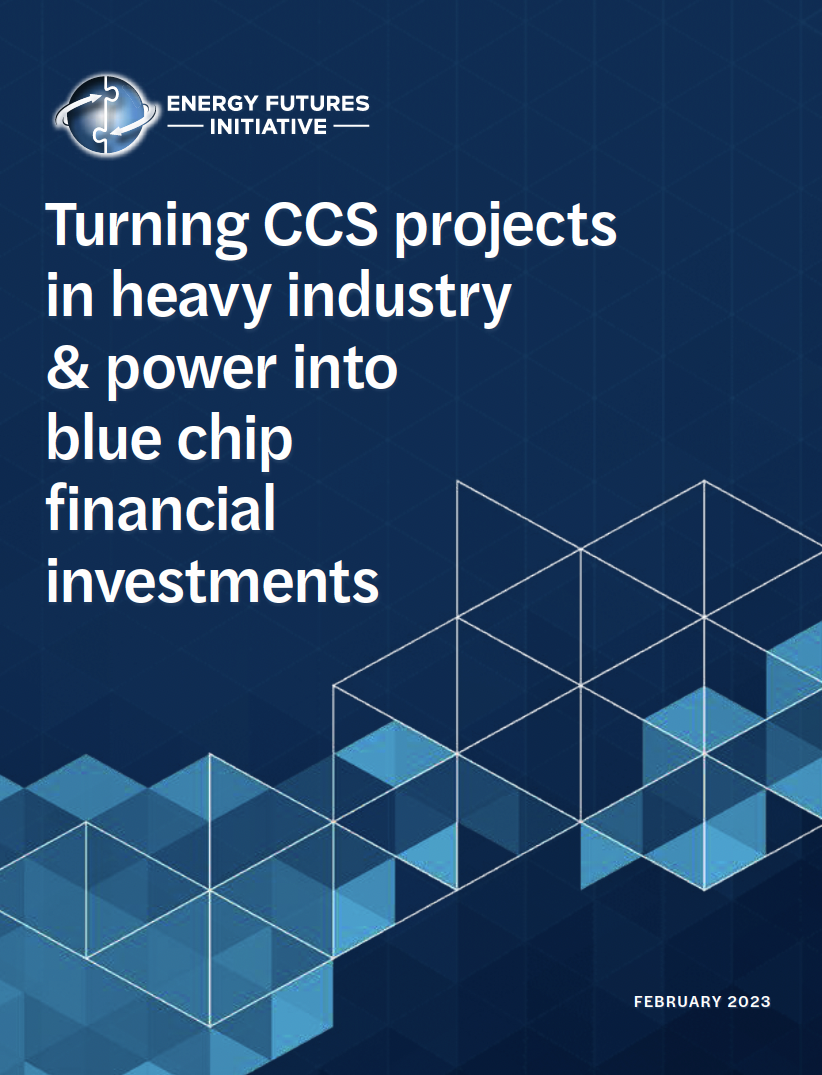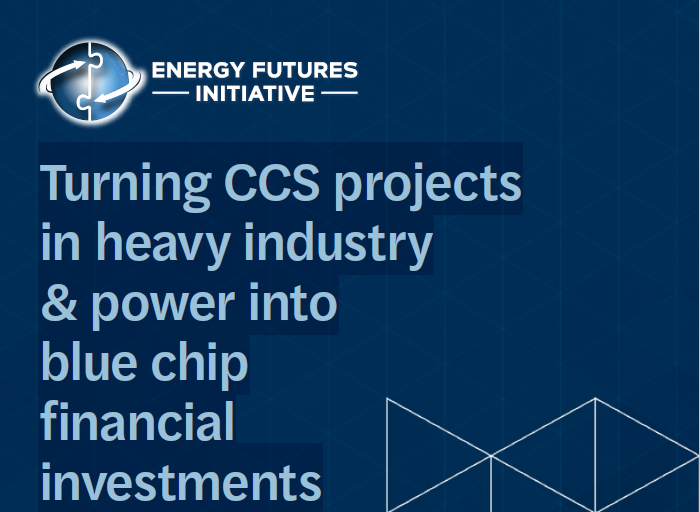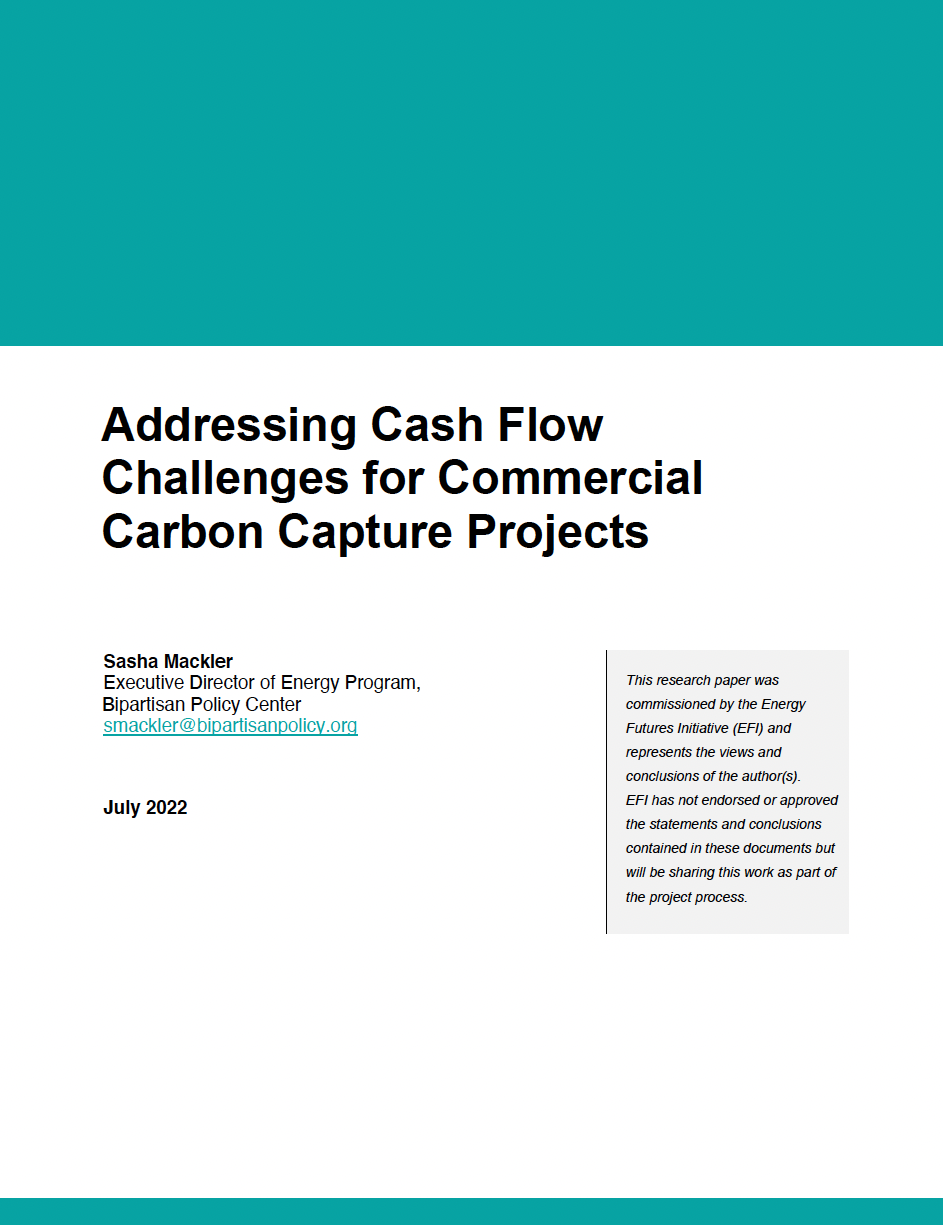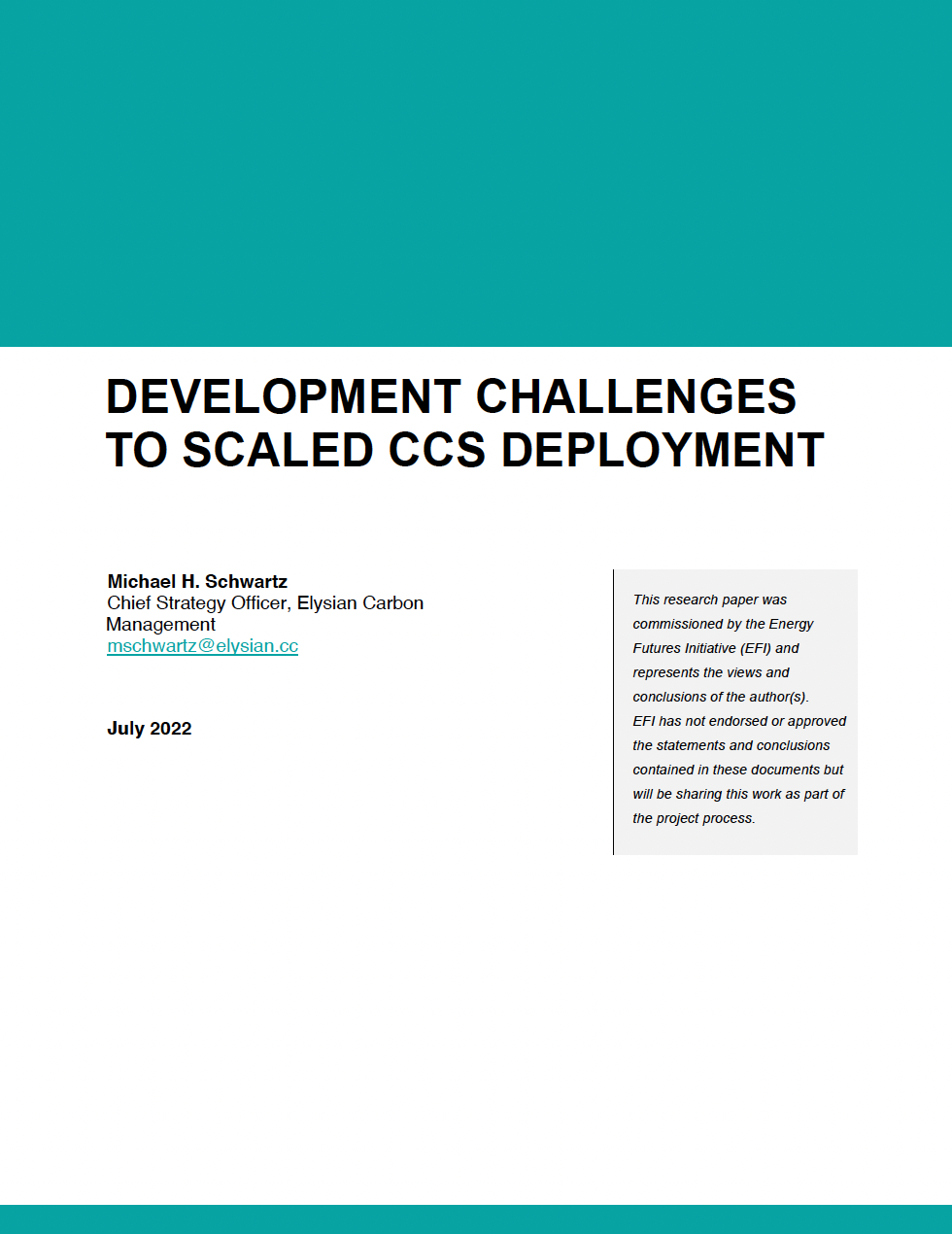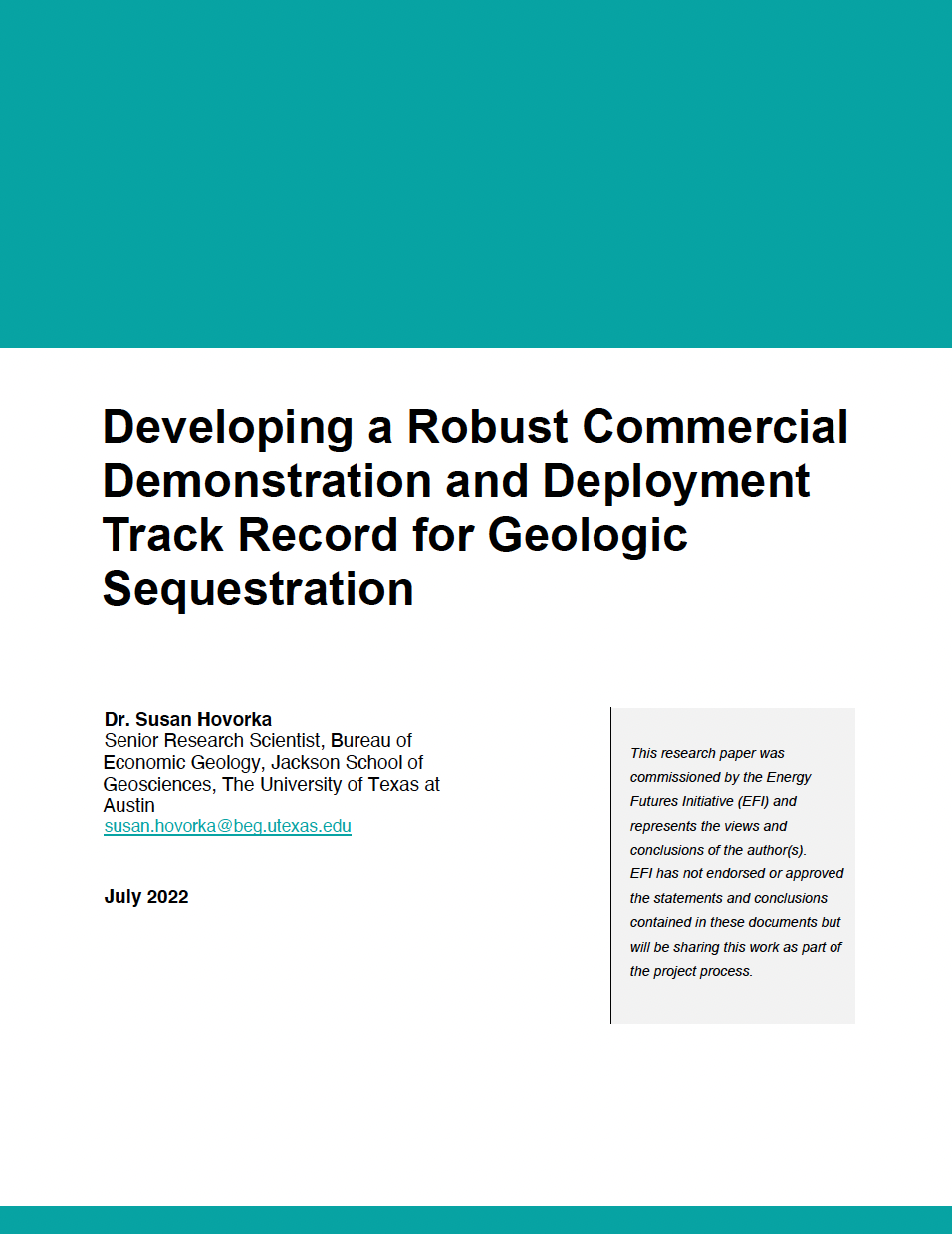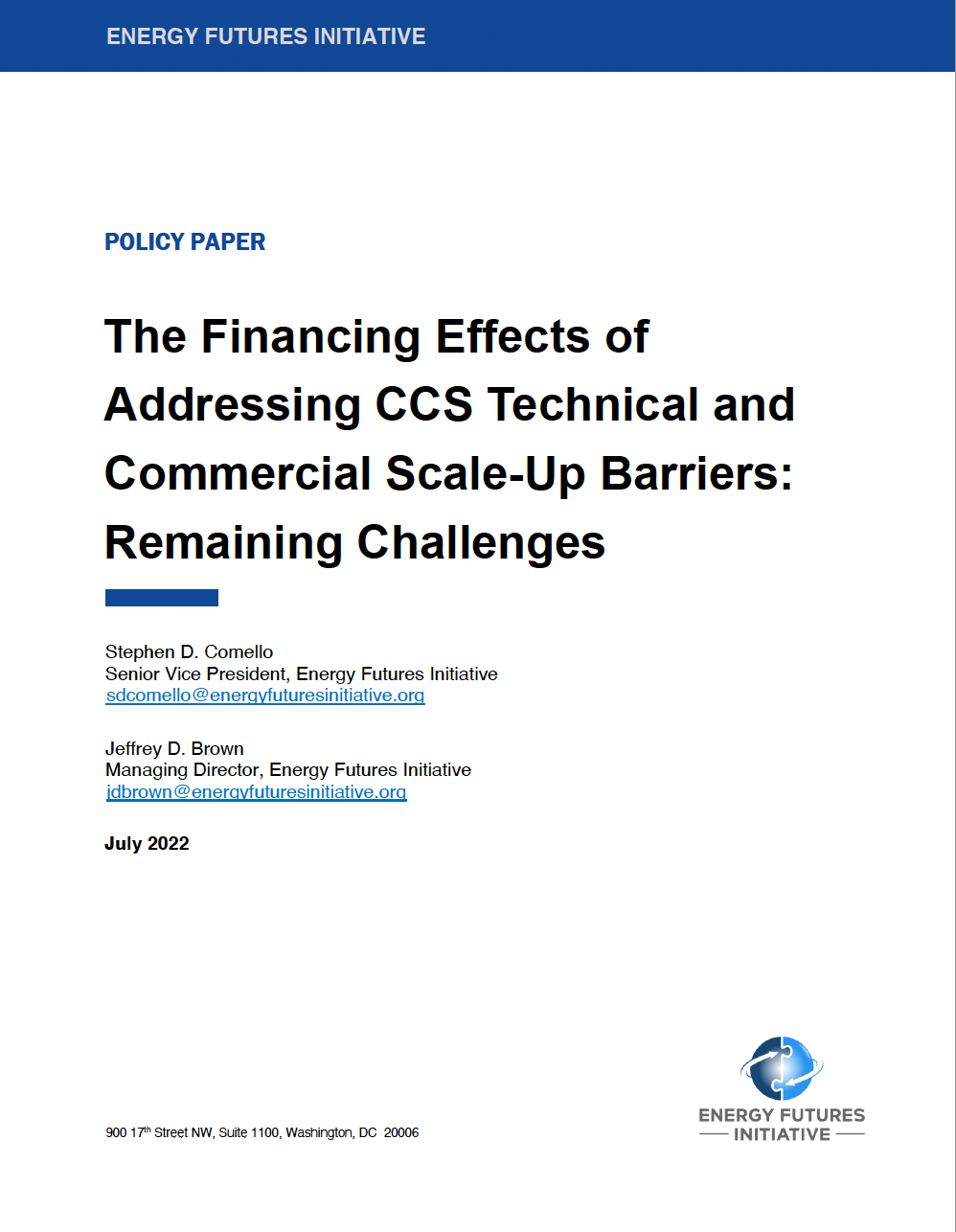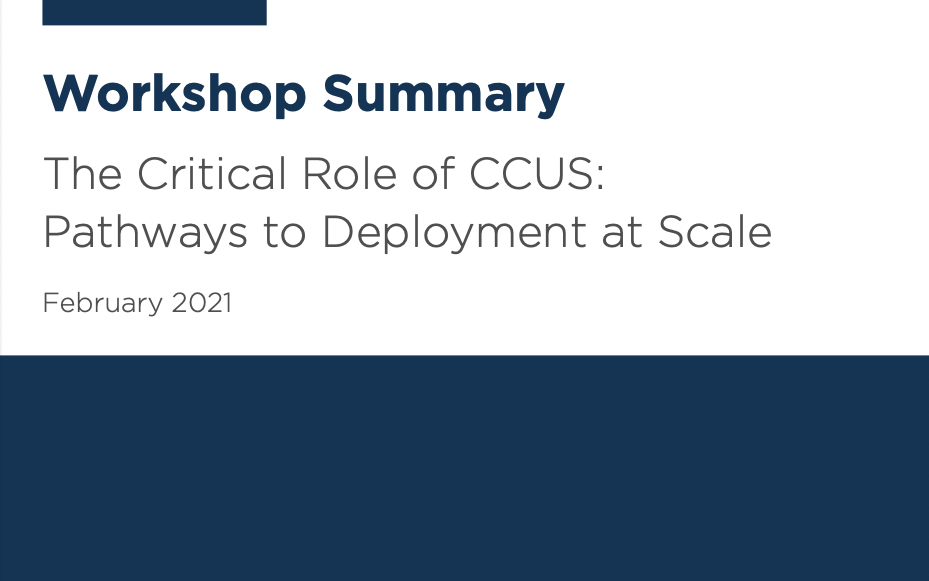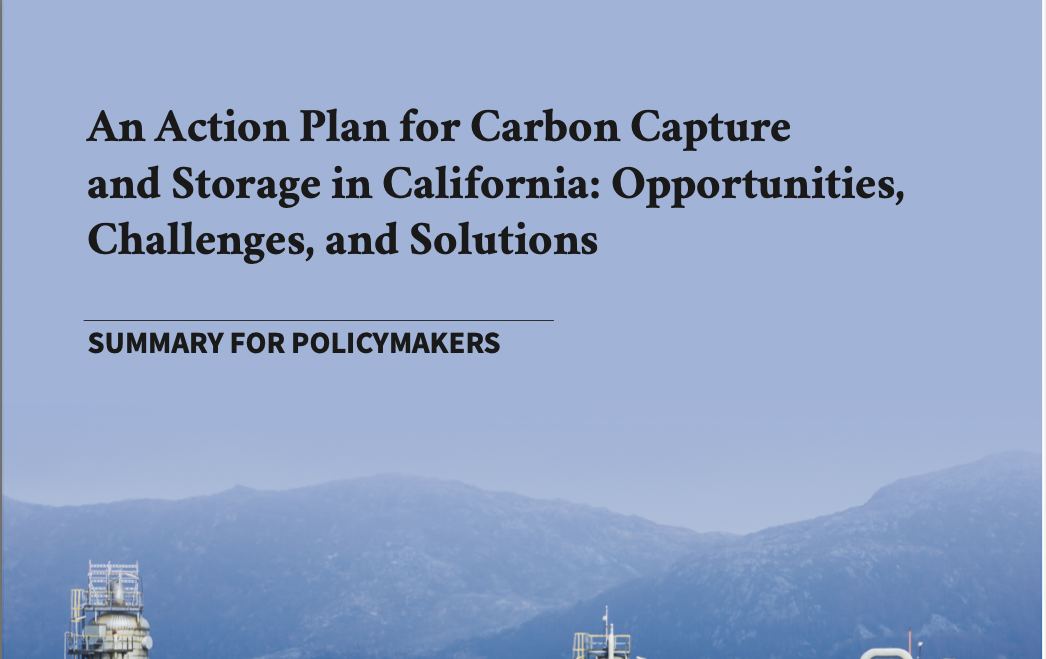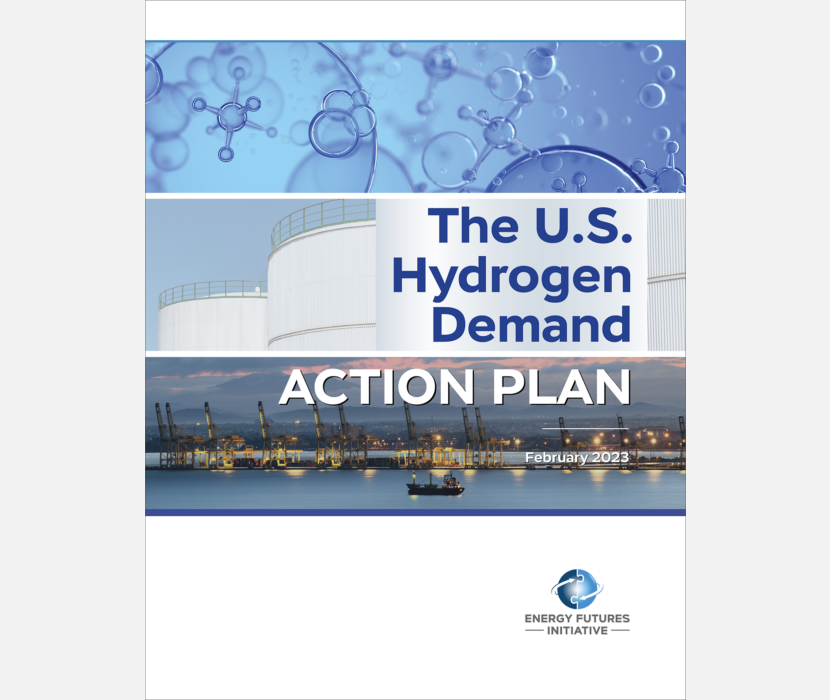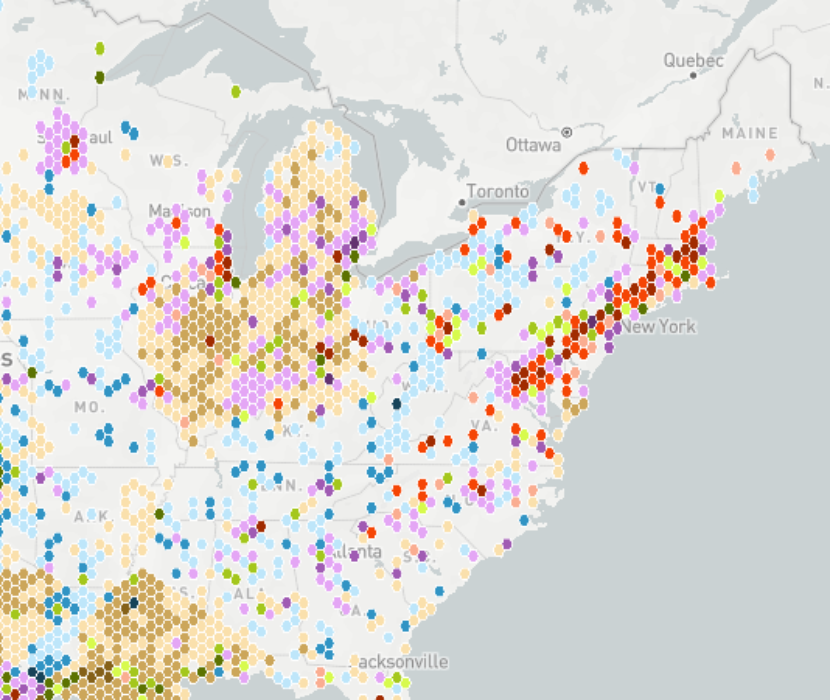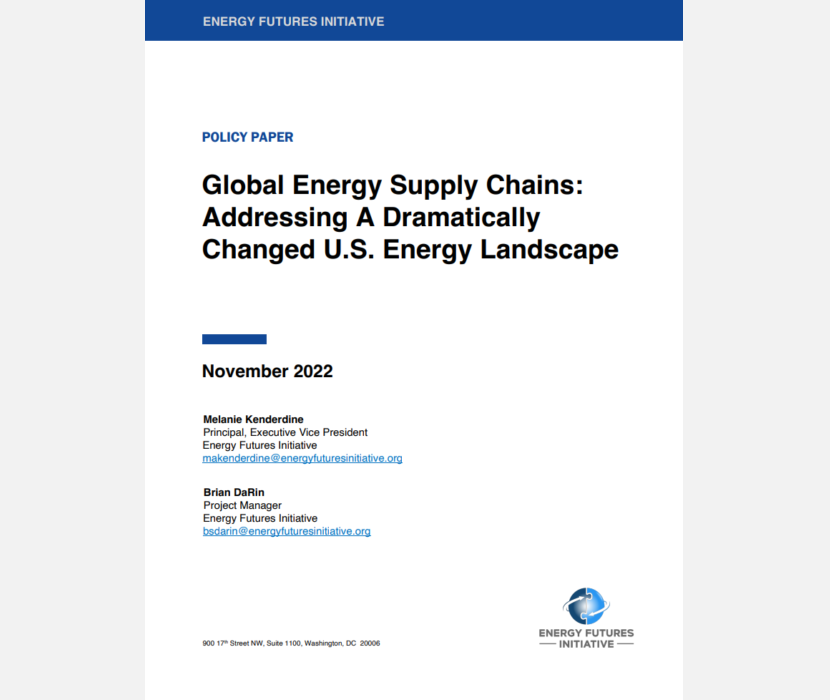Watch the recording from our webinar on February 14th!
Turning CCS Projects in Heavy Industry and Power into Blue Chip Financial Investments (February 2023) is a deep-dive analysis into the challenges of commercializing and deploying carbon capture and sequestration (CCS) at scale. The report identifies six areas of CCS investment challenges that are consistently raised by project owners, developers, and investors, and offers policy recommendations to overcome those challenges and attract private capital.
All the basic elements of the CCS value chain—capture, transport, deep underground injection, and ongoing monitoring—have been deployed in various commercial applications in the United States for decades. However, CCS as a pollution control mechanism for carbon dioxide (CO2) is not established, though it could decarbonize key U.S. sectors, including heavy industry and electric power. Despite the potential for CCS to act as a decarbonization solution, stark challenges inhibit its progress toward commercial-scale deployment.
A fundamental reason that CCS has not progressed as a decarbonization solution is that carbon dioxide emissions are not restricted or priced at the national level, which means there is no clear commercial impetus to reduce emissions. CCS for pollution control also entails other challenges that may further repel investors, including that the value chain is complex and that retrofitting existing facilities with carbon capture technology varies across applications.
EFI commissioned expert white papers, conducted stakeholder interviews, hosted technical workshops, and conducted substantive primary and secondary research. Through this work, the team arrived at conclusions that can guide stakeholders and decisionmakers, including in the federal government (especially in The U.S. Department of Energy [DOE] and Congress) and state governments. These recommendations would greatly support CCS becoming a high-value, “blue chip” financial investment by addressing the most prominent concerns of investors.
Six areas (themes) of CCS investment challenges and recommendations:
1. Supply and demand incentives
• DOE: Provide low-cost equity to first movers by awarding Bipartisan Infrastructure Law commercialization grant funds to the first three to five CCS installations on a per-industry basis, supplementing the $85/metric ton tax credit. Also, revise DOE Loan Programs Office rules to allow loans to fourth- and fifth-of-a-kind CCS installations.
• Congress: Allow DOE to issue loans to first-of-a-kind projects that are simultaneously receiving grants.
• States: Modify state clean electricity procurement standards to make CCS an eligible compliance solution. Also, ensure that CCS-enabled fossil plants have levels of dispatch that ensure project financial feasibility by updating market rules to allow for take-if-available energy contracts under power purchase agreements or clean capacity payments.
2. Tax credit incentives
• Internal Revenue Service: Ensure that new regulations required to implement the 45Q direct pay and transferability provisions of the Inflation Reduction Act are designed in a way that will be conducive to bringing a broader range of new buyers into the market.
• Congress: Consider expanding the number of eligible entities (i.e., tax-exempt pension funds and charitable foundations) that are able to use clean energy tax credits.
3. Information sharing from federally funded projects
• DOE: Require funding recipients to disclose key engineering performance data to DOE and to the public. Also, fund the aggregation of existing data, new data, and building of tools to support geologic sequestration commercial development.
• The White House Office of Information and Regulatory Affairs: Harmonize federal air pollution databases to facilitate screening of facilities amenable to CCS retrofits.
4. Reduce CCS value chain complexity
• States: For each state, create one coordinating body to manage all state-level CCS regulatory interfaces. Also, develop clear, workable regulations and statutes for pore space unitization, post-closure liability, and pipeline eminent domain.
• Congress: Determine the appropriate federal role in permitting, eminent domain, and economic regulation for interstate pipelines and geologic sequestration sites. Also, authorize public-private partnerships in first-of-a-kind CCS pipeline and sequestration infrastructure, when appropriate.
5. Carbon capture project emissions disclosure and research
• States: Add a community disclosure requirement of the combined impact of CO2 emissions, criteria air pollutants, and hazardous air pollutants from carbon capture projects.
• DOE: Fund and perform research on the net changes of criteria air pollutants and hazardous air pollutants at host facilities that add carbon capture for high-polluting industries.
6. Sharing community benefits
• DOE: Collaborate with state and local governments to fund capacity building of communities to negotiate community benefits agreements with CCS developers.
These recommendations should be viewed as mutually reinforcing in enhancing the investment quality of CCS as a decarbonization solution and lowering the barriers to private flows of capital to CCS projects. Taken together, they address the investment challenges faced by project owners, developers, and investors.
Supplemental Material
Related Content
(Share this post with others.)


